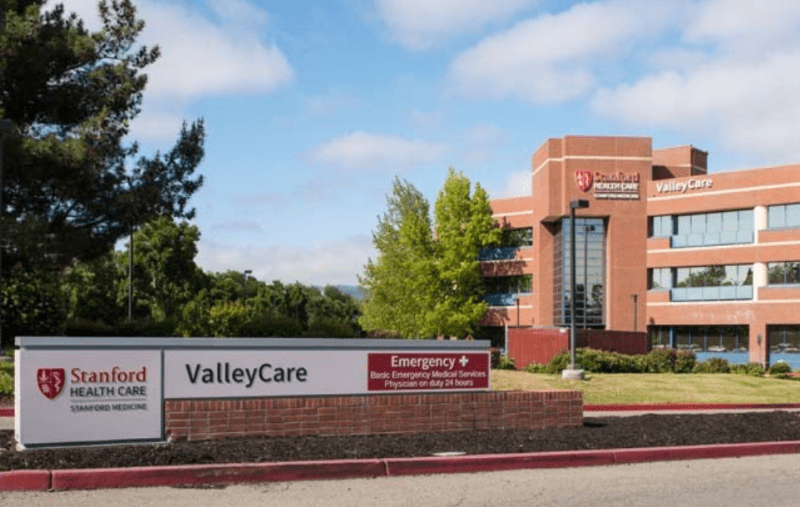Armed with personal protective equipment (PPE), telemedicine tools and a shared passion to deliver the best patient care they can, neurologists working at the satellite Stanford ValleyCare hospital in Pleasanton are finding ways to adapt to the new normal of medical care amid a pandemic. They don their masks each morning, well-aware of the sacrifices that COVID-19 demands. They understand the risks, but take them anyway.
ValleyCare only recently received its certification as a primary stroke center in September 2019, but its emerging program has not been defeated by COVID-19. The doctors there have spent significant time readjusting to ensure their patients still receive adequate treatment. Prashanth Krishnamohan, a neurologist at ValleyCare and a clinical assistant professor at Stanford, said that they have spent hours planning, not just for an increase in patient volume, but also for a diminished staff because of providers who have fallen ill.
“We’ve created two or three backup schedules for every procedure under every provider, in case that doctor can’t make it due to illness or self-isolation,” he said.

One of those providers is Fanglin Zhang, who serves as a clinical assistant professor at Stanford in addition to her role at ValleyCare. Zhang, Krishnamohan and a third neurologist cover the entire inpatient service.
“For 24 hours a day, seven days straight, we three take turns being on call,” Zhang said. “We are pioneers establishing neurology in an underserved area, and COVID-19 only makes our work more important.”
Frank Longo, who chairs Stanford’s neurology department, offered insight into the teamwork that takes place in his department: “I’m so inspired by the resilience of not just the patients, but also my colleagues,” Longo said. “They continue moving forward in all aspects of their work.”
Specifically, there are two areas in his department that have shifted procedures due to the pandemic, “the first being teaching and the second being clinical care,” according to Longo.
“Teaching medical students during the pandemic has been a new challenge,” Longo said. “It’s been harder to work together with teachers and students, but we’ve accommodated by being organized with our scheduling.”
“We’re following different models to make it work,” Krishnamohan added. “Events such as grand rounds and morning reports were moved virtually.”
On the clinical side, Longo commented on the use of telemedicine, a growing practice in the medical field that allows for long-distance patient care and health services. Telemedicine relies on HIPAA-approved video-conferencing tools to make meaningful patient-doctor interactions possible virtually.
“Before COVID-19, we thought that telemedicine would be difficult,” Longo said. “We didn’t think we could thoroughly assess our patients. COVID-19 forced us to implement telemedicine, and in being forced to do so, we learned that we actually can get a thorough read of our patients.”
Telemedicine is “fantastic for patients who live a long ways away,” he added. “It has improved access to places that don’t have enough providers.”
Telemedicine also allows for interdisciplinary collaboration.
“The ICU [intensive care unit] team huddles with the stroke team in the morning, and the ER team in the evening,” Krishnamohan said. “When the pandemic broke out, we could no longer have these meetings — so we huddle virtually.”
The adjustments demonstrate the resilience and innovation of those in the medical field, particularly considering their lives are at risk.
Zhang, who is currently quarantining for 14 days due to two exposures to coronavirus, reported that “we’ve gotten so much support from all of the teams and from our department chair. From the start, ValleyCare had enough PPE and supplies to let us do our job to our greatest ability.”
The families of the doctors are at risk as well. In sharing her family’s experiences during the COVID-19 outbreak, Zhang highlighted the large shift in their routines due to her job. Zhang urges her two young children to “keep a distance,” and prefers to eat alone rather than risk exposing her family during meals.
Krishnamohan shared similar experiences: he enters his home through the back door and immediately sanitizes anything within arm’s reach.
“Faced with the unknown, we didn’t know anything about COVID-19,” Krishnamohan said. “Do I isolate from my kids? How deadly is this virus? We had no idea. But we have to do our best to go about our lives and go to work every day.”
Even with no vaccine or cure available in this critical time, these physicians understand the gravity of their work.
“The sacrifice of my own health and safety is worth it to me,” Zhang said. “If you don’t go into work, who else will go for you? We took an oath, and it’s our job. My patients need me, and the ICU waits for nobody.”
Contact Emmy Apfel at emilia.apfel ‘at’ gmail.com.
